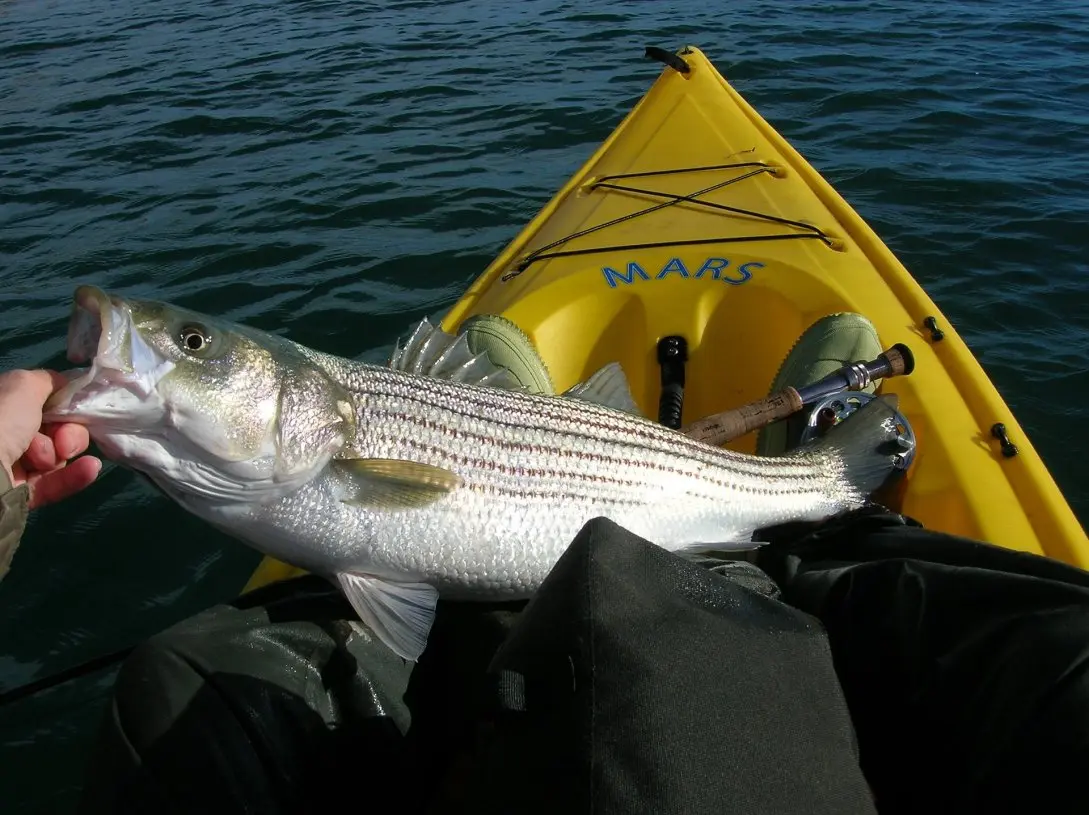Choosing the Right Kayak Fishing Gear
Having the right kayak and equipment makes a huge difference in comfort, effectiveness, and safety on the water. Look for a sit-on-top fishing kayak at least 10 feet long for better tracking and storage. Outfit the kayak with flush mount rod holders, gear tracks for rigging accessories, a padded seat, and a milk crate for extra storage. Essential gear includes a bilge pump, paddle leash, anchor system, personal flotation device (PFD), signaling equipment like a whistle and flags, and safety accessories like a first aid kit.
Don’t skimp on your fishing rod, reel and tackle. A 7-foot medium power spinning rod can handle most species, while a 3000-5000 series reel provides good capacity. Use braided line from 20-50 lb test for abrasion resistance. Stock essential lures like jerkbaits, crankbaits, soft plastics, topwater lures, and jig heads to catch anything from bass to walleye from a kayak.
Master Kayak Fishing Techniques
The kayak fishing experience brings unique techniques compared to fishing from shore or a traditional boat. Practice proper paddling fundamentals before focusing on fishing, like correct forward stroke, reverse sweep, draw strokes and braces. Learn to launch, land, exit and reenter the kayak safely. Improve your balance through core engagement, proper seating position, using thigh braces, and keeping your center of gravity low.
Once comfortable paddling, master casting from a seated position without snags by modifying your wrist snap and using your torso for added power. Consider a side arm pitch cast parallel to the kayak. Use an anchor system like a stakeout pole or anchor trolley to fish a specific area more thoroughly. Consider drifting or pedaling with fins for covering water to find fish. Use electronics like fishfinders and GPS to identify hot spots even in current or wind.
Implement Safety Best Practices
The most important kayak fishing tips relate to proper safety precautions. Always wear your PFD, file a float plan with someone onshore, dress appropriately for weather and water temperature, avoid alcohol during your outing, and keep safety essentials like signaling devices readily available. Be prepared for capsize by learning proper reentry techniques and dressing to avoid hypothermia. Carry gear that’s easily secured or floats to prevent lost equipment.
Pay attention to your fishing environment for potential hazards like boat traffic, strainers, dams, bridges, and areas with strong current, wind or storms. Carefully unhook and release fish from the kayak using pliers, grippers and fish friendly techniques. Use a cooler strapped in your milk crate to keep your catch cool and secure. Avoid braided lines around feet and ankles and other entanglement hazards. Listen to emergency weather alerts and get off the water early if conditions deteriorate.
Finding Fish from a Kayak
Now for the fun part - catching more fish from your kayak! Focus on structure like weed lines, ledges, docks and submerged timber that holds baitfish and predatory species. Work the edges of drop offs and channels with deep diving crankbaits. Skip jigs and soft plastics under docks for hiding bass and panfish. Use topwater lures and prop baits in and around lily pad fields and grass flats early and late in the day. Drift open water with live bait rigs for suspended walleye and trout. Vertical jigging spoons also triggers reaction bites.
In rivers and creeks, identify current breaks, riffles, pools, overhanging trees and boulders where fish wait to ambush prey. Bounce jigs, spinners and live bait off the bottom in these strike zones. When venturing on larger lakes, use electronics and satellite imagery to find secret honey holes like underwater points, humps, and creek channel swings holding baitfish and gamefish.
Conclusion
As you can see, mastering a few key kayak fishing tips goes a long way in preparing for success and having safe fun on the water. Invest in quality fishing kayaks and gear suited for stability and storage. Practice essential paddling techniques until they become second nature. Rig your kayak for hands-free fishing with rod holders and anchor systems. Follow safety best practices at all times, especially wearing a PFD and filing a float plan. Finally, use proven fish-catching techniques by focusing on structure, depth changes, baitfish activity and ambush points to consistently hook into more fish during your kayak fishing adventures.
Edited: Dec 13, by Adminai
